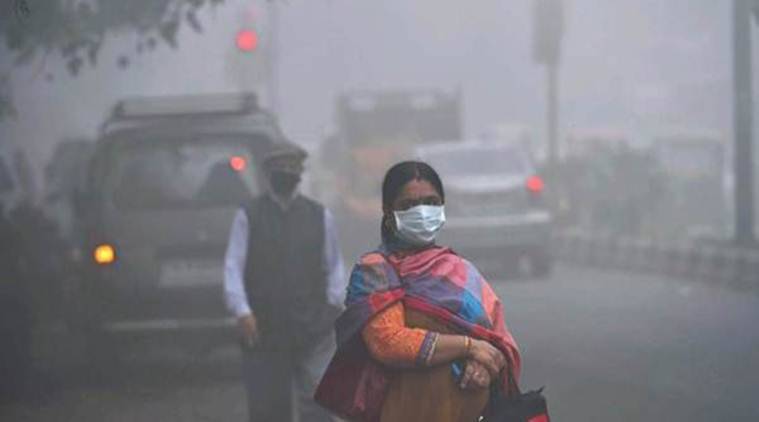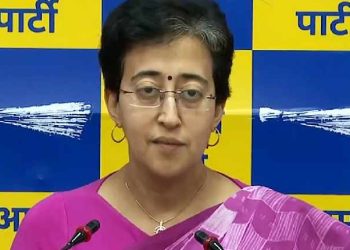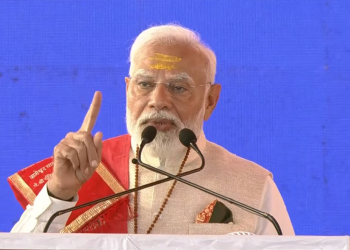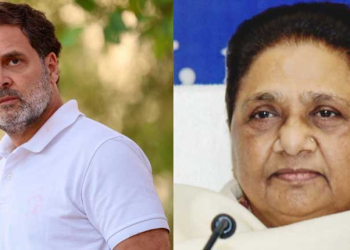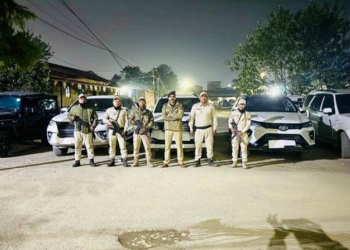New Delhi: India is the world’s second most polluted country. Air pollution shortens the average life expectancy in the country by five years, relative to what it would be if the World Health Organization (WHO) guideline fine particulate pollution (PM2.5) of 5 micrograms per cubic metre of air was met as per the AQLI pollution index fact sheet on India in June 2022 that translates particulate air pollution into perhaps the most important metric that exists: its impact on life expectancy.
Developed by the University of Chicago’s Milton Friedman Distinguished Service Professor in Economics Michael Greenstone and his team at the Energy Policy Institute at the University of Chicago (EPIC), the AQLI is rooted in recent research that quantifies the causal relationship between long-term human exposure to air pollution and life expectancy.
Some areas of India fare much worse than average, with air pollution shortening lives by almost 10 years in the National Capital Territory of Delhi, the most polluted city in the world.
All of India’s 1.3 billion people live in areas where the annual average particulate pollution level exceeds the WHO guideline.
More than 63 per cent of the population live in areas that exceed the country’s own national air quality standard of 40 micrograms per cubic metre of air.
Measured in terms of life expectancy, particulate pollution is the greatest threat to human health in India, reducing life expectancy by five years. In contrast, child and maternal malnutrition reduces average life expectancy by about 1.8 years, while smoking reduces the average life expectancy by 1.5 years.
As per AQLI, particulate pollution has increased over time. Since 1998, average annual particulate pollution has increased by 61.4 per cent, leading to a further reduction in average life expectancy of 2.1 years. Since 2013, about 44 per cent of the world’s increase in pollution has come from India.
In the Indo-Gangetic plains of Northern India, 510 million residents, nearly 40 per cent of India’s population, are on track to lose 7.6 years of life expectancy on average, if current pollution levels persist.
Residents of Lucknow stand to lose 9.5 years of life expectancy if pollution levels persist. According to the AQLI, a permanent, nationwide reduction of 25 per cent, the midpoint of NCAP’s target range, would increase India’s average national life expectancy by 1.4 years, and by 2.6 years for residents of the National Capital Territory of Delhi.
Dr Anju Goel, Fellow, Earth Science and Climate Change Division, The Energy and Resources Institute (TERI) said as per the recent data from Central Pollution Control Board (CPCB), 95 of the 132 non-attainment cities covered under the National Clean Air Programme (NCAP) have seen an overall improvement in PM10 levels in 2021 compared to 2017.
However, the government must focus on reducing regional-scale pollution to achieve the prescribed standard of 60 micrograms per cubic metre of air for PM10. In most Indian cities, background sources contribute the most pollution. In India, cooking and heating with solid biomass burning and industry are major sectors contributing to approximately 30 per cent and 21 per cent of PM2.5 concentrations, Goel said.
National scale policies to promote LPG penetration in the residential sector and cleaner fuel and efficient technologies in Industries can help the country tackle regional scale pollution. The existing PMUY has increased the LPG coverage in the country. However, consistent supply and usage of LPG as a primary cooking fuel remains a concern, Goel said.
On the air quality issues that India faces, Dr Pratima Singh, who leads the Centre for Air Pollution Studies (CAPS) at the Centre for Study of Science, Technology and Policy (CSTEP) said lack of technical understanding (emission inventory and source apportionment studies) of the pollution sources delayed the preparation of effective action plans for the cities.
This led to identifying the efficient control measures for improving the air quality levels. Moreover, interventions such as road infrastructure development, improvement in transport services, and shifting to cleaner fuel requires financial support and departmental coordination.
The ULBs identified at the city level are not well equipped with either the scientific understanding, nor with efficient technical resources for management of the air quality. The ULBs are loaded with other city-level activities and hence air quality management is not a priority area. There has been regular monitoring by MoEFCC, however that is not sufficient as ground-level monitoring is not in place, Singh said.
“These challenges will definitely hamper the implementation process and ultimately lead to failure in achieving the NCAP target, making the program and the efforts futile. We need a strong direction from the centre which involves regular and stringent monitoring at ground,” Singh said.
Dr Anjal Prakash, Research Director and Adjunct Associate Professor at Bharti Institute of Public Policy, Indian School of Business and lead author of the chapter on urbanization in the recent IPCC reports said in a 2019 global survey, it was found that India was home to 21 of the 30 most polluted cities.
According to statistics provided by a website, this caused India to move up one spot in the world rankings, to number five.
The average US AQI reading was 152, and the PM2.5 measurement was 58.08 g/m3. This concentration was five times greater than what the World Health Organization advises (WHO).
Overall, this represents an improvement above the 72.54 g/m3 result from 2018. For the majority of the nation, this portends serious health issues. Most of the pollution is attributed to rising urban population and the concentration of economic activities. The urban activities such as transportation and energy use are one of the major sources, Prakash said.
Together with the carbon emission, India has ranked third in terms of greenhouse gas emission. However, the per capita emission is one of the lowest in India which also goes to show that Indians are largely carbon neutral in their lifestyle as compared to the western economies, Prakash said.
“I will not say that India is losing the fight over air pollution as it is also asking for an equitable carbon space. A large proportion of India is still developing that needs energy and related requirements. However, there is a concept called green development which needs to be looked into. This means that we must look into options which can help us develop in a carbon neutral way,” Prakash said.
Dr Harshal Ramesh Salve, Additional Professor, Centre for Community Medicine, All India Institute of Medical Sciences, said air pollution is a chronic all season problem in India and needs a long term sustainable solution with multi stakeholder engagement.
“We really need to monitor expenditure made both by national and state governments in the National Clean Air Programme (NCAP) and National Programme on Climate Change and Human Health (NPCCHH) programmes.
“Measuring both air quality and health outcomes at national, regional and local level is crucial and this needs to be strengthened through existing mechanisms,” Salve said.
Polash Mukerjee, Lead, Air Pollution and Climate Resilience at the Natural Resources Defense Council’s India program said that three years after NCAP’s debut, there has been progress in the area of air pollution.
“Most of our cities have action plans, however some are more advanced than others in terms of execution. There is activity on the ground and source apportionment studies have been commissioned in many places. But there is still a great deal to be done. The lack of capacity is a significant hindrance in the way of treatments. Simply said, there is not enough committed and well-equipped staff present in these cities,” Mukerjee said.
The XVth Finance Commission funds provided a wonderful opportunity to hire analysts or other dedicated personnel at the local level, which would help the cities develop their capacity over the long term. Although the National Knowledge Network and Air Quality Management Cells have been formed, their use has not been as effective as it could have been due to a shortage of dedicated personnel.
“There are a few major issues keeping India from upholding its air quality promises, the most obvious of which is the failure to enforce the standards for power plants. The eleven-year wait is truly unbelievable. No nation that has successfully addressed air quality has taken such an approach. The other area of work is bringing together activities on the fronts of health, climate change, and clean air in order to generate convergence between numerous active threads at various levels. This needs to take place at the local, state, and national levels. This opens up the possibility of constructing a special governance structure that will strengthen capacity building, create a system for checks and balances, and guarantee the development of time-bound goals,” Mukerji said.
Anumita Roychowdhury, Executive Director, Research and Advocacy, Centre for Science and Environment, India said: “India’s commitment at the COP 26 included achieving 500GW of renewable energy capacity by 2030, 50 per cent of its energy requirements from renewable energy by 2030, reduction of the carbon intensity of the economy by 45 per cent by 2030, over 2005 levels, to be net zero by 2070, and also the signing of the pledge for 100 per cent electrification with a special focus on two and three wheelers in the time frame of 2030 to 2040. If all of these commitments are accomplished within the stated time frame, India can achieve substantial improvement in air quality and public health.”
Dr Bhargav Krishna, Fellow at the Centre for Policy Research, said: ‘We have done well in setting long-term goals to improve air quality through the NCAP and supporting those goals partially through funds from the 15th finance commission. However, the institutional frameworks and long-term strategy necessary to achieve these goals are still missing. Action plans are largely a wish-list of issues without really containing the detail necessary to foster effective sectoral transitions, whether it be for transport, stubble or power. Our Pollution Control Boards also lack the manpower and technical capacity to effectively regulate industry, and this places substantial constraints on turning our goals into reality. Without investing in the institutions necessary to support the move towards cleaner air, the ambitious goals we have set for ourselves will largely remain on paper.”
(IANS)



